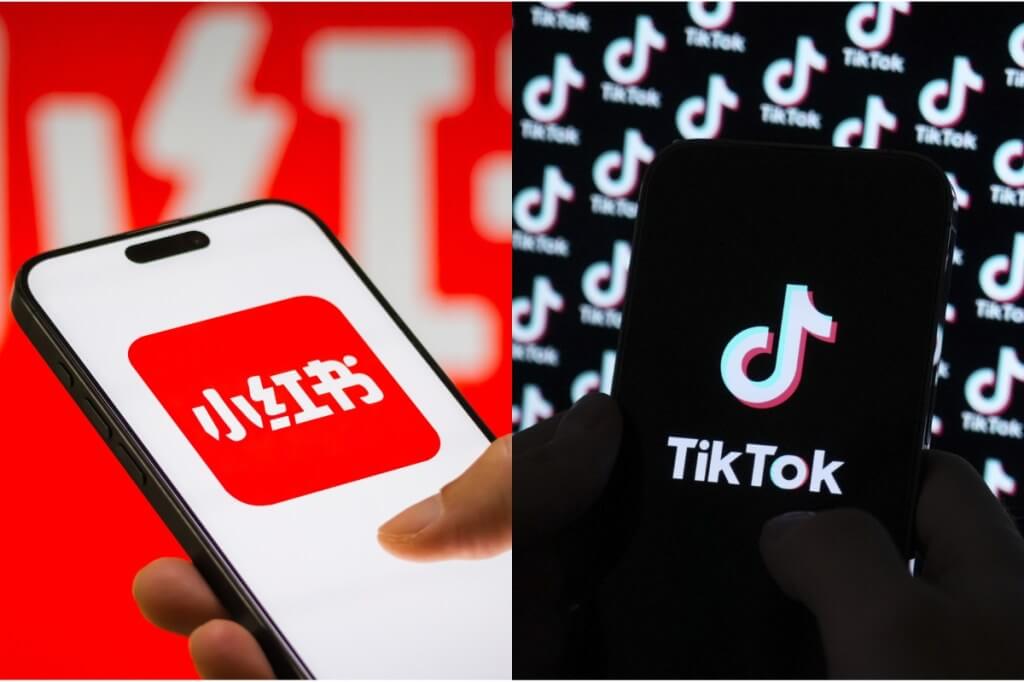ClevGuard Support: Monitor Devices with Others' Permission.
As people look for alternatives to TikTok due to potential bans, RedNote (also known as Xiaohongshu) has caught the attention of many. But is RedNote like TikTok? This article explores the features of RedNote and compares it to TikTok to help you understand their differences. While both are popular social media platforms, they offer unique experiences and cater to different audiences. In the sections ahead, we'll break down what makes each platform special, from their content styles and target users to their shopping features and ways people interact on them.

Table of Contents
Part 1: What Is RedNote Xiaohongshu?
RedNote, or Xiaohongshu, is a Chinese social media platform that blends lifestyle sharing with e-commerce. Launched in 2013, it allows users to post product reviews, fashion tips, and travel experiences. Unlike TikTok, which primarily focuses on short-form entertainment content, Xiaohongshu emphasizes community-driven insights and detailed product discussions.
Basic Information about RedNote:
| Name | RedNote(Xiaohongshu) |
|---|---|
| Compatibility | Android, iOS |
| Price | Free |
| Launch Year | 2013 |
| Main Focus | Lifestyle and e-commerce |
| Content Format | Photos, long-form content, short videos |
| Key Features | Social commerce integration |
Part 2: RedNote VS TikTok Reviews
In the ongoing debate of RedNote vs TikTok, it's clear that both platforms cater to different user needs and experiences. While they share similarities with social media apps, their core focus, audience, and features set them apart. Let's break it down in an engaging way to help you understand their unique strengths.
1. Content Style and Focus: Depth vs. Entertainment
When it comes to content, RedNote and TikTok couldn't be more different.
- RedNote (or Xiaohongshu) is all about meaningful, detailed lifestyle content. Think product reviews, fashion tips, or travel guides that dive deep into the specifics. Users often create long-form posts or videos that feel more like personal recommendations than fleeting entertainment. It's a space where authenticity shines, and the goal is to inform and inspire.
- On the other hand, TikTok thrives on short-form, high-energy videos designed for quick consumption. From viral dance trends to comedic skits and creative challenges, TikTok's content is fast-paced and visually engaging. It's perfect for users who want a burst of entertainment in just a few seconds.
2. User Demographics: Niche vs. Broad Appeal
The audiences for these platforms are just as distinct as their content styles.
- RedNote attracts a niche community of users—predominantly young urban women—who are deeply interested in fashion, beauty, and lifestyle products. The platform fosters a sense of trust through detailed discussions about brands and products, making it a go-to for those seeking authentic recommendations before making purchases.
- TikTok, however, casts a much wider net. Its audience spans across all age groups and interests, from Gen Z teens creating dance challenges to older adults sharing life hacks or funny moments. TikTok's algorithm ensures that everyone can find something they enjoy, making it a melting pot of diverse content.
3. E-Commerce Integration: Shopping Made Easy
One of the biggest differences between the two platforms lies in how they handle e-commerce.
- RedNote was designed with shopping in mind. It seamlessly integrates e-commerce into its platform, allowing users to discover products through reviews or recommendations and purchase them directly within the app. This makes RedNote not just a social media app but also a powerful tool for social commerce.
- TikTok, while it has introduced shopping features like TikTok Shop in some regions, still prioritizes its role as an entertainment platform first. Shopping on TikTok often happens through sponsored content or brand collaborations rather than being fully integrated into the user experience.
4. User Engagement: Conversations vs. Reactions
How users interact on these platforms also highlights their differences:
- On RedNote, engagement feels more personal and meaningful. Users often leave thoughtful comments on posts or engage in discussions about products they've tried or want to try. This fosters a sense of community where trust and credibility are key.
- Meanwhile, TikTok thrives on spontaneity. Engagement often takes the form of likes, shares, or quick comments reacting to trends or challenges. The interactions are fun but fleeting—perfect for the fast-paced nature of the platform.
Part 3: Is RedNote Safe for Kids?
Concerns regarding the safety of social media platforms for children are paramount for many parents. When considering whether is RedNote safe, it's essential to evaluate its content nature:
- Content Nature: Much of the content revolves around beauty products and lifestyle topics that may not be suitable for younger audiences.
- Community Interaction: Users can comment on posts which may expose children to negative interactions or inappropriate comments.
- Lack of Parental Controls: Unlike TikTok, which offers parental control features, RedNote does not provide robust options for monitoring children's activity.
Overall, while RedNote can be a valuable resource for product recommendations and lifestyle tips, parents should exercise caution when allowing their children to use the platform.
Part 4: How to Set Parental Control on TikTok?
To ensure a safer experience for children on TikTok, parents can implement parental controls as follows:
1. Set Parental Control with TikTok Built-in Feature
Access Family Pairing:
- Open the TikTok app.
- Go to your profile by tapping "Me" at the bottom right.
- Tap the three dots (or three lines) in the top right corner to access settings.
- Select "Digital Wellbeing" and then "Family Pairing."
Link Accounts:
- Follow the prompts to link your account with your child's account.
- You will need to create a QR code or enter a code provided by your child's account.
Adjust Settings:
- Once linked, you can adjust various settings including: Screen Time Management, Set daily limits for app usage.
Monitor Activity:
- Regularly check your child's activity within the app to ensure they are engaging with appropriate content.
By utilizing these parental controls, parents can help create a safer environment for their children while using TikTok.
2. Use A TikTok Tracker
KidsGuard for TikTok is the best way to monitor kids' TikTok activities, including check their private liked videos, track kids' live locations, monitor someone's TikTok usage time, and take screenshot of TikTok activities.
Besides, once you install this app on your kid's phone, you can remotely monitor their TikTok without being known in real-time. In this way, you don't need to access their phone and can track all TikTok data on your phone.
What Can KidsGuard for TikTok do to Set Parental Control on TikTok?

What makes KidsGuard Pro outstanding
- Discreetly Monitoring: KidsGuard for TikTok can operate in a stealth mode, which can let your monitoring be secret and remote.
- Track Location: You can get your kids' live location on TikTok, knowing whereabouts of kids.
- Monitor Usage Time: You can know how long your kids had spent time in TikTok and limit their using time on dashboard.
- Screenshot TikTok Activity: It will take a live screenshot when your kids have new interaction on TikTok, ensuring you get insight into their activities.
People Also Ask
The term "TikTok refugee" refers to users who have migrated from TikTok to other platforms like RedNote due to concerns over privacy issues or potential bans on TikTok in certain regions.
No, while many view RedNote as an alternative to TikTok due to its rising popularity among users seeking different experiences, it fundamentally differs in purpose and content focus. The ongoing debate of Xiaohongshu vs TikTok highlights these differences clearly; while both apps serve social media functions, they cater to distinct user needs.
Conclusion
In summary, while both RedNote and TikTok are significant players in the social media landscape, they cater to different user preferences and experiences. The question of whether is RedNote like TikTok is complex; although they share similarities in being social media platforms owned by Chinese companies, their core functionalities diverge significantly. As users navigate these platforms amidst changing regulations and preferences, understanding these differences will help them choose the best fit for their interests.






